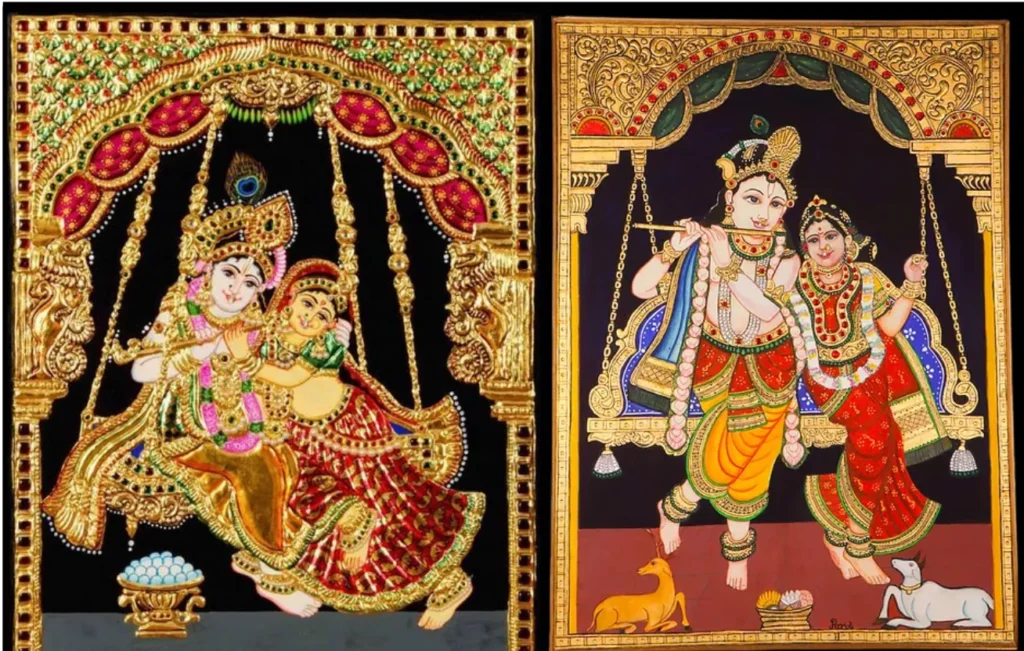Blogs

Mysore Painting: A Symphony of Elegance and Precision
Nestled in the cultural tapestry of Karnataka, Mysore painting emerges as a classic artistic style that marries finesse with vivid storytelling. This traditional South Indian art form, originating in the princely city of Mysuru, boasts a legacy dating back to the reign of the Wodeyar kings in the late 17th century. Known for its intricate detailing, vibrant color palette, and graceful themes, Mysore painting exemplifies the rich cultural heritage of the region.


Historical Roots:
The roots of Mysore painting can be traced back to the patronage of the Wodeyar rulers, particularly during the reign of Maharaja Krishnaraja Wodeyar III in the late 1800s. The royal ateliers fostered the development of this exquisite art form, with artists creating paintings that adorned the palaces and reflected the cultural ethos of the time.
Characteristics of Mysore Painting:
- Precision and Detailing: Mysore paintings are celebrated for their meticulous detailing and precision. Artists employ fine brushes and steady hands to create intricate patterns, delicate jewelry, and expressive facial features, showcasing a high level of artistic skill.
- Vibrant Colors: The colour palette of Mysore’s paintings is rich and vibrant. Artists use natural pigments derived from minerals, plants, and precious stones, creating a harmonious blend that adds life to the artwork. The luminosity of the colors contributes to the overall aesthetic appeal.
- Gesso Work: Similar to Tanjore’s painting, Mysore paintings feature gesso work to create an embossed effect. The use of a paste made from chalk powder and a binding medium provides a textured surface, enhancing the visual depth of the composition.
- Themes and Subjects: Mysore paintings often depict mythological themes, historical events, or scenes from Indian epics like the Ramayana and Mahabharata. The emphasis on traditional subjects reflects the cultural and religious milieu in which these paintings originated.
Evolution and Adaptation:
While Mysore painting has retained its traditional charm, contemporary artists have explored new themes and adapted the style to suit modern sensibilities. This evolution has allowed the art form to remain relevant while preserving its core techniques and cultural essence.
Cultural Significance:
Mysore paintings hold a significant place in the cultural heritage of Karnataka. They are not merely artistic expressions but also serve as visual narratives that connect viewers to the region’s history, mythology, and traditions. The artworks are often considered auspicious and are used in religious ceremonies and festivals.
Preservation and Promotion:
In recent years, there has been a concerted effort to preserve and promote Mysore painting. Art schools, workshops, and cultural organizations actively engage in imparting the techniques of this classic style to aspiring artists, ensuring the continuity of the tradition.
Global Recognition:
While deeply rooted in the cultural fabric of Karnataka, Mysore painting has garnered international acclaim. Exhibitions and cultural exchanges have exposed this classic art form to a global audience, fostering appreciation for its elegance and cultural significance. Mysore painting, with its intricate detailing, vibrant colours, and historical resonance, stands as a testament to the artistic brilliance of Karnataka. As it continues to captivate art enthusiasts and find new expressions in the hands of contemporary artists, Mysore painting remains an enduring symbol of cultural heritage and artistic finesse.


